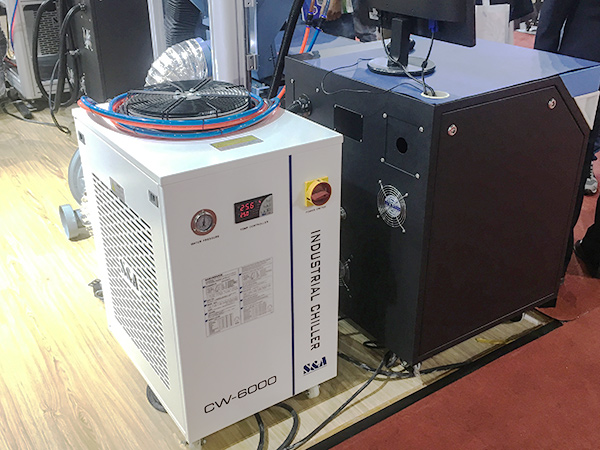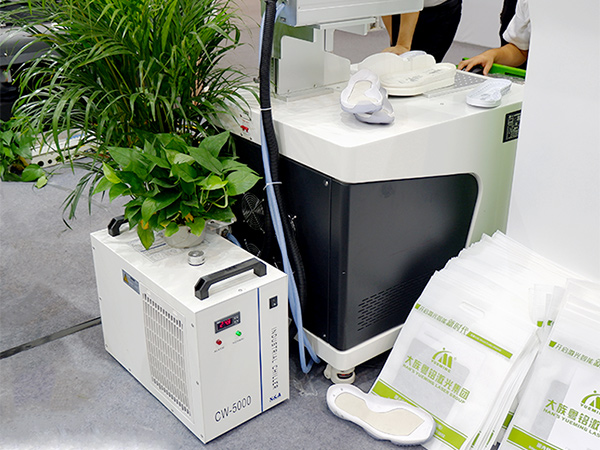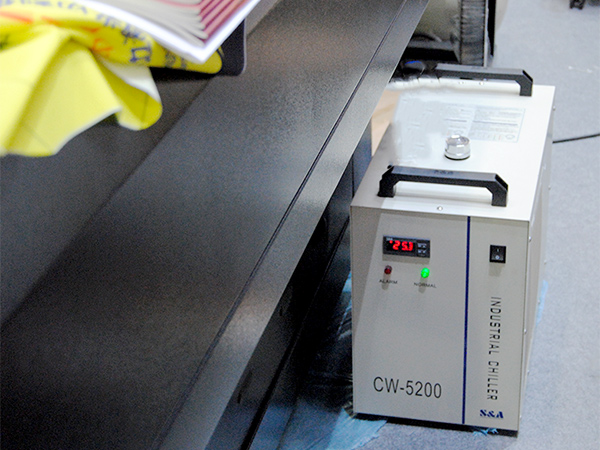The textile and clothing industry has gradually started to use laser processing technology and entered the laser processing industry. Common laser processing technologies for textile processing include laser cutting, laser marking, and laser embroidery. The main principle is to use the ultra-high energy of the laser beam to remove, melt, or change the surface properties of the material. Laser chillers have also been widely used in the textile/garment industry.
The Application of Laser Processing Technology in the Textile/Clothing Industry
With the arrival of the "laser era", laser processing technology has been widely used in various industries, such as aviation, automobiles, railways, electronics, and appliances, due to its precise processing, fast speed, simple operation, and high degree of automation. Even the textile and clothing industry has gradually started to use laser processing technology and entered the laser processing industry. Common laser processing technologies for textile processing include laser cutting, laser marking, and laser embroidery. The main principle is to use the ultra-high energy of the laser beam to remove, melt, or change the surface properties of the material.
1. Laser Engraving on Leather Fabrics
One application of laser technology in the leather industry is laser engraving, which is suitable for manufacturers of shoes, leather goods, handbags, boxes, and leather clothing.
Laser technology is currently widely used in the shoe and leather industry because it can quickly engrave and hollow out various patterns on leather fabrics. The process is convenient, flexible, and does not cause any surface deformation of the leather, showcasing the color and texture of the leather itself.
2. Laser-printed Denim Fabrics
Through CNC laser irradiation, the dye on the surface of denim fabric is vaporized to create image patterns that will not fade, gradient flower patterns, and sandpaper-like effects on various denim fabrics, adding new highlights to denim fashion. Laser printing on denim fabrics is a new and emerging processing project with rich processing profits and market space. It is extremely suitable for denim clothing factories, washing plants, processing enterprises, and individuals to carry out value-added deep processing of denim series products.
3. Laser Cutting of Appliqué Embroidery
In computer embroidery technology, two steps are very important, namely cutting before appliqué embroidery and cutting after embroidery. Laser cutting technology is used to replace traditional processing technology in the front and back cutting of appliqué embroidery. Irregular patterns are easier to cut, and there are no scattered edges, resulting in a high yield of finished products.
4. Laser Embroidery on Finished Garments
The textile and clothing industry can utilize lasers to create various digital patterns, covering more than two-thirds of the clothing market's demand. Laser embroidery has the advantages of easy and fast production, flexible pattern changes, clear images, strong three-dimensional effects, the ability to fully reflect the color and texture of various fabrics, and staying new for a long time. Laser embroidery is suitable for textile finishing processing factories, fabric deep processing factories, clothing factories, accessories, and incoming processing enterprises.
5. Laser Cooling System for Laser Processing in the Textile Industry
Laser processing uses the laser as a heat source to process workpieces, which generates a large amount of excess heat during the process. Overheating can lead to low yield, unstable laser output, and even damage to the laser equipment. Therefore, it is necessary to use a laser chiller to solve the problem of overheating and ensure the continuous and stable operation of textile laser processing equipment.
TEYU Chiller offers over 90+ models suitable for 100+ manufacturing and processing industries, with cooling capacities ranging from 600W to 41kW. It provides stable and efficient cooling, effectively solving the problem of overheating in textile laser processing equipment. This reduces equipment losses and ensures stable operation, higher yield, and longer service life of the processing equipment. With the support of TEYU chillers, laser technology in the textile processing industry can continue to deepen and move towards an era of intelligent manufacturing.




We're here for you when you need us.
Please complete the form to contact us, and we'll be happy to help you.



































































































